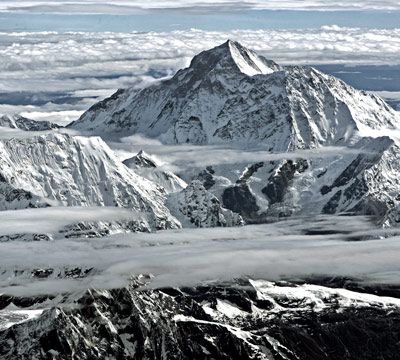
It's the summit of summits, known to the West as Mount Everest. Those who live nearby have for centuries called it Sagarmatha ("the ocean's brow") in Nepalese, or Jomolungma ("goddess of the glaciers") in Tibetan.
Advertisement

The mountain's Western namesake is Sir George Everest, a Welsh surveyor and geographer who was Surveyor-General of India from 1830 to 1843.
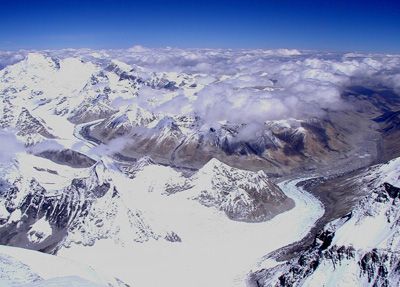
Even at a full 29,029 feet (8,848 meters) tall, Everest has several neighbors that rival it in height, including Lhotse, Nuptse, Makalu and Chomo Lonzo.
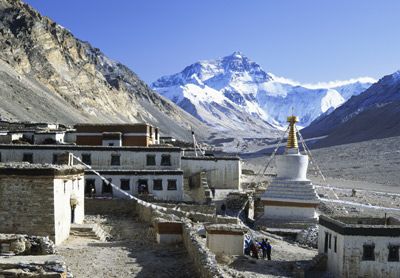
Rongbuk Monastery lies on the Tibetan side of Mount Everest. For more than a century, it has stood as the highest monastery on Earth.
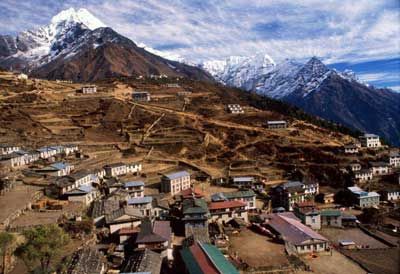
This part of the Solu-Khumbu region of Nepal lies at the base of Mount Everest. Small towns like this one make a good headquarters for Everest climbing hopefuls.
Advertisement
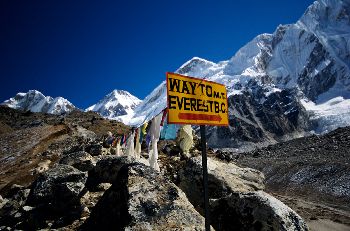
This way to Everest. Thousands of people summit the mountain every year, even though a permit can cost up to $25,000 for each climber.
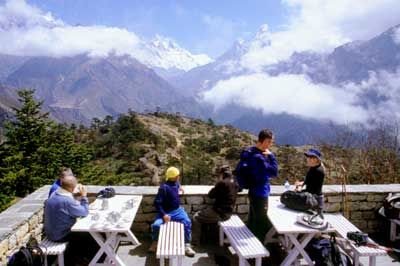
Tourism accounts for 4 percent of Nepal's GDP.
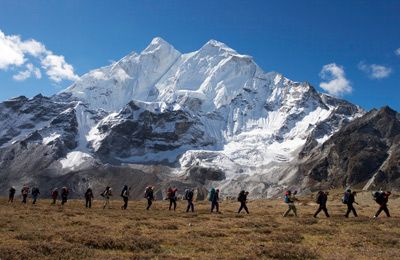
This group of trekkers is dwarfed by Mount Everest. Take a look at Mount Everest base camp in the next photo.
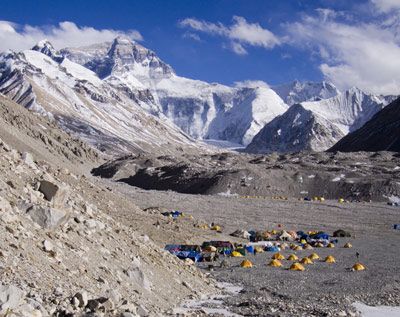
Everest base camp lies in Rongbuk Valley on the Tibetan side of the mountain.
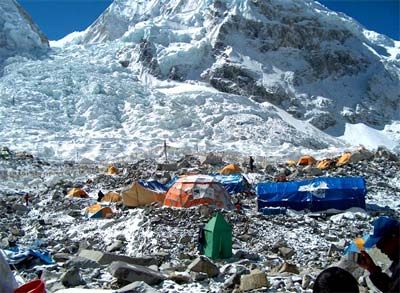
Climbers have to compete for space all the way up the mountain. It's a crowded route. See a traditional climbers' ceremony in the next photo.
Advertisement
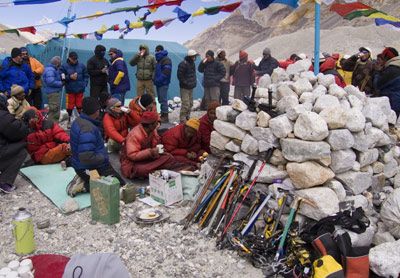
At Mount Everest base camp, climbers, Sherpas and Tibetan monks use the Puja ceremony to pay homage to the mountain deities. See the famous prayer flags in the next photo.
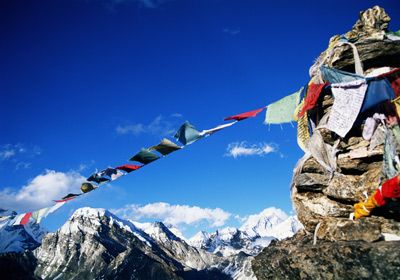
These prayer flags on the Nepal side of the mountain wave in the wind, with Mount Everest in the background.
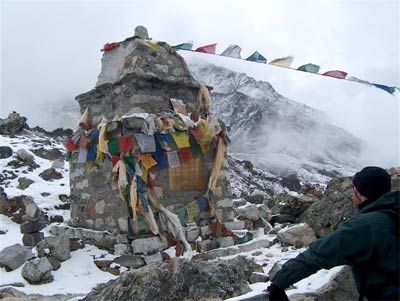
If the prayers are answered, the climbers will make a safe ascent. Time to start climbing.
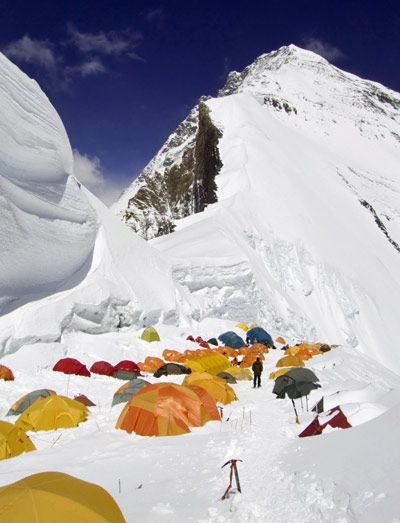
These tents are pitched in deep snow on the Tibetan side of Mount Everest. There are many vertical feet yet to climb.
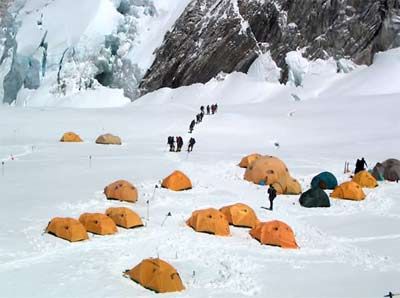
The tents turn the slopes into an ad-hoc mountain village. See a climber in action in the next photo.
Advertisement
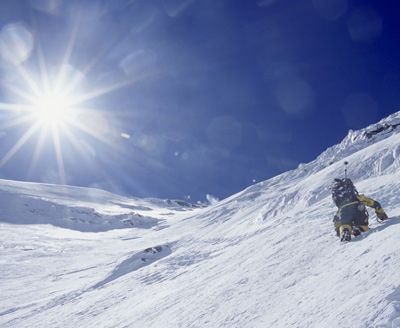
This climber braves Mount Everest's legendary north face in Tibet. Some spots of the mountain are so dangerous, climbers must use ladders to ascend.
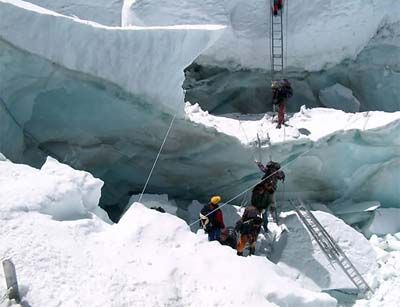
One benefit of having so many climbers on the mountain is having a somewhat reliable infrastructure in place.

This climber uses a ladder to cross a dangerous crevasse on the slopes of Mount Everest. Take a look down a crevasse in the next photo.
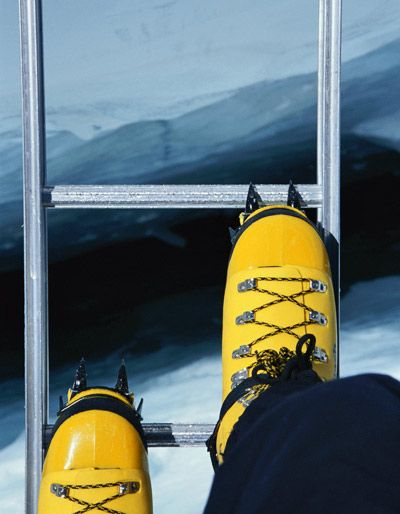
A dizzying view of a crevasse in the Khumbu Icefall, the most dangerous part of the southern route on Everest
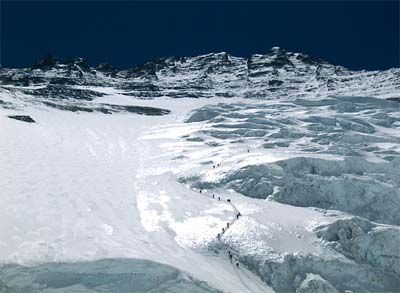
The shifting ground is like a bunch of ice cubes continually tumbling down the icy mountain wall.
Advertisement
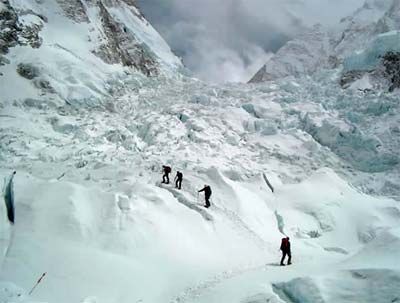
Many climbers have been killed in the Khumbu Icefall. An early morning start is the best strategy, as it's much safer to climb before the sun warms the ground and all those blocks of ice start shifting.
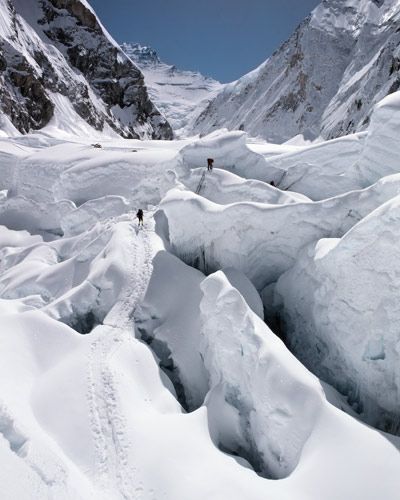
These climbers are approaching the top of the Khumbu Icefall, heading into Western Cwm.

Here's a view of Everest's north summit. The south route is still the most popular, but the north is a more technical challenge that also avoids the dangerous Khumbu Icefall. Take another look at the Mount Everest summit in the next photo.

Mount Everest is so tall that it interferes with the clouds that pass by. Here a lenticular cloud forms above its peak. See storm clouds gather in the next shot.
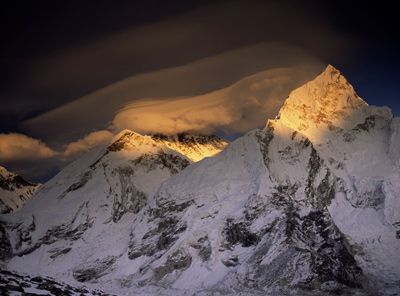
Ominous clouds hug the summit pyramid of Mount Everest in this photo. Sudden mountain storms have killed dozens of climbers over the years. See another Everest sunset on the next page.
Advertisement

Most climbers require about four days to make it from base camp to the summit. A few elite climbers have done it in 20 hours or less.
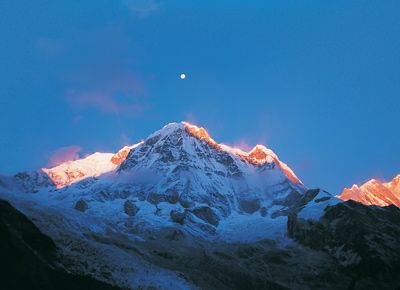
Mount Everest still stands as the summit of summits. Learn more about what it takes to get to the top in How Climbing Mount Everest Works.